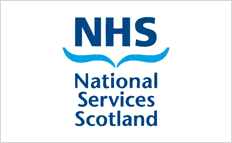Zinc (Zn)
Zinc is an essential element of established importance in humans: numerous enzymes are zinc metalloproteins which control several stages of both protein and nucleic acid synthesis.60 Severe deficiency of zinc occurs in acrodermatitis enteropathica, an inherited defect in which zinc absorption from the intestine is impaired. It results in retarded growth, hypogonadism, skin & ophthalmic lesions, and a deficiency in cell-mediated immunity.61
Determination of plasma zinc concentration is by far the most commonly used procedure for investigation of suspected zinc deficiency.62 However, the interpretation of small changes in the concentrations observed in respect to a reference population is complicated by several factors which affect plasma zinc concentration independently of zinc status. These include the concentration of plasma albumin (about 70% of plasma zinc is bound to albumin), diurnal variation, the time of sampling in relation to meals, and a decrease in patients with a systemic inflammatory response (CRP > 20 mg/L; Table 1).28 This reduction is dependent on the magnitude of the systemic inflammatory response (Table 2). Plasma zinc should therefore be measured around two weeks after a systemic inflammatory response has resolved.
In this country, significant zinc deficiency is most likely to occur in patients on TPN feeding, and those with malabsorption, burns, or prolonged diarrhoea. This can result in poor appetite, delayed wound healing, dermatitis, mental lethargy, and growth retardation.
Increased ingestion of zinc in patients prescribed zinc or who purchase it from health food shops and individuals who over-apply zinc-containing dental adhesive (Fixodent), may be at risk of developing copper deficiency. Such patients usually have elevated plasma zinc and invariably have increased urinary zinc concentrations.
The causes of high plasma zinc concentrations include increased ingestion, renal failure and hyperprolactinaemia but more commonly it is due to contamination by the use of inappropriate containers (especially those with O-rings in the lid)63 or failure to separate plasma from blood within 4 hours.64
Urinary zinc may be elevated as a result of increased ingestion of zinc or muscle breakdown.
Effect of Systemic Inflammatory Response on Plasma Zinc Concentrations
Table 1: Baseline, peak/ trough and day 7 concentrations of CRP and plasma zinc following elective surgery for knee arthroplasty (n = 20).27
|
Baseline values (0 h) |
Peak/trough (48 h) |
Final values (168 h) |
Friedman (0–168 h) |
|
|---|---|---|---|---|
| CRP (mg/L) | <6 (<6–17) | 160 (83–240) | 29(10–87) | <0.001 |
| Plasma zinc (μmol/L) | 14.9 (13.1-17.9) | 9.3 (8.8-11.5) | 14.4 (12.4-20.3) | <0.001 |
Table 2: Distribution of median plasma zinc concentrations according to increments of CRP concentrations (n = 2083).28
|
CRP concentration (mg/L) |
n | Median plasma zinc concentration (μmol/L) | p |
|---|---|---|---|
| ≤5 | 1091 | 13.0 | - |
| >5-10 | 290 | 12.5 | 0.1 |
| >10-20 | 217 | 12.8 | 0.1 |
| >20-40 | 162 | 12.0 | <0.001 |
| >40-80 | 135 | 11.1 | <0.001 |
| >80 | 188 | 10.4 | <0.001 |
Sample Requirements and Reference Ranges for Zinc
| Sample Type | Plasma / serum (fasting sample preferred), urine (24 hour collection) |
|---|---|
| Container |
Plasma/serum: Trace element free tubes are the preferred sample type but lithium heparin (non-gel) and plain tubes are also accepted. SST, lithium heparin gel and EDTA (except EDTA tubes that are trace element free) tubes are unsuitable. Urine: 24 hour urine container. |
| Precautions |
Plasma: Send plasma by first class post to arrive within 72 hours of collection. If delivery to Glasgow will be outwith 72 hours store plasma frozen until sending and then send by first class post. NB. Zinc tends to leak from red cells so plasma should be separated as soon as possible (cut-off: 4 hours; or within 24 hours if refrigerated). NB. If samples collected within NHS GGC are being sent directly to Glasgow Royal Infirmary Biochemistry they must arrive at the lab Monday to Friday 9am-4pm (not on public holidays or weekends) and arrive within 4 hours of collection. NB. Samples collected into a container which has a rubber O-ring in the lid are prone to significant contamination. If requesting within NHS GGC please use a partially filled adult lithium heparin non-gel sample for paediatrics as the paediatric lithium heparin tube contains a rubber O-ring. NB. Zinc and castor oil ointment applied to the skin may cause substantial contamination. Urine: Please mix 24 hour urine well before taking an aliquot. |
| Minimum volume* |
Plasma: 250 µL* (copper and selenium can be analysed simultaneously on this volume.) Urine: 1 mL |
| Reference ranges |
Plasma: 11.0 to 18.0 µmol/L (male, 9 years and above)65 10.0 to 18.0 µmol/L (female, 9 years and above)65 10.0 to 18.0 µmol/L (0 to <9 years)65 < 6.0 µmol/L (deficiency likely assuming normal CRP/albumin) Urine: 3.0 to 19.0 µmol/24h54 |
| Turnaround time | See this page for STEMDRL TAT targets |
| Method | Inductively coupled plasma mass spectrometry |
| Traceability |
Plasma: Traceable to reference material produced in accordance with EN ISO 17511:2003 “In vitro diagnostic medical devices. Measurement of quantities in biological samples. Metrological traceability of values assigned to calibrators and control materials”. Urine: Traceable to reference material produced in accordance with EN ISO 17511:2003 “In vitro diagnostic medical devices. Measurement of quantities in biological samples. Metrological traceability of values assigned to calibrators and control materials” and reference materials with values determined by reference laboratories. |
| Intermediate Precision (CV) | See this page for latest data |
| Measurement Uncertainty, U | See this page for latest data |
| Analytical Goals (CV) |
See this page for latest data Plasma zinc goal is based on biological variation32 |
| EQA Scheme | Plasma and urine: UK NEQAS, Guildford (once per month). |
| Included in UKAS scope? | Plasma and urine: Yes |
* Absolute minimum volume; this volume is insufficient to carry out repeat analysis if analysis fails.

